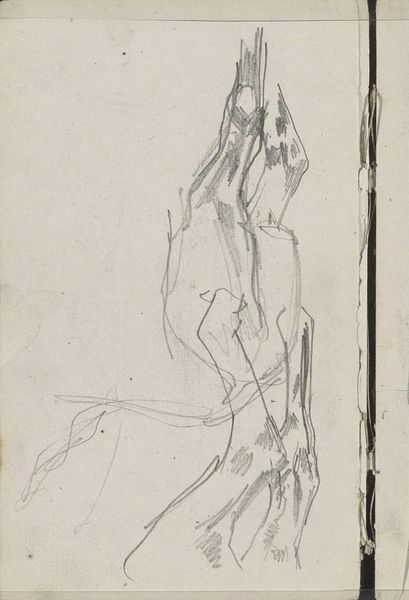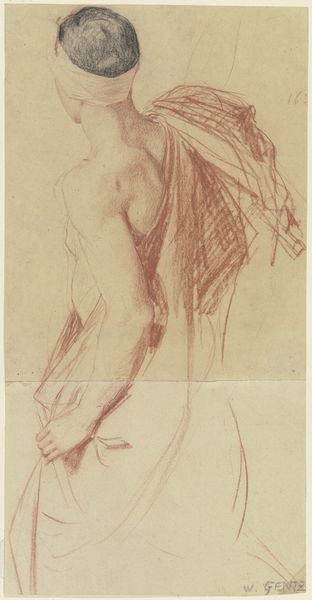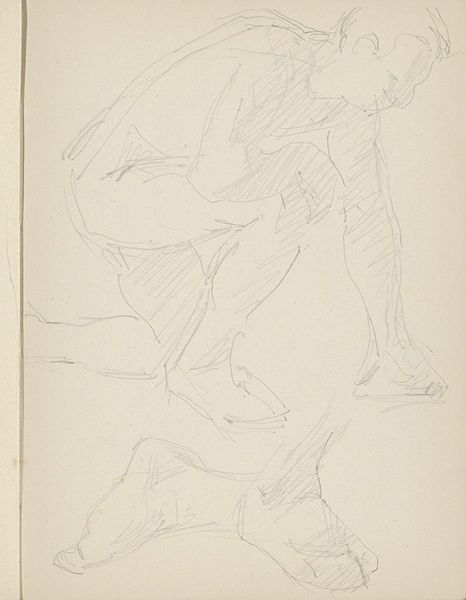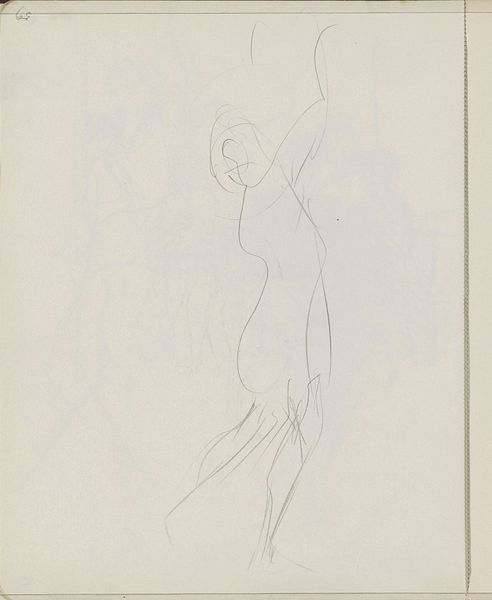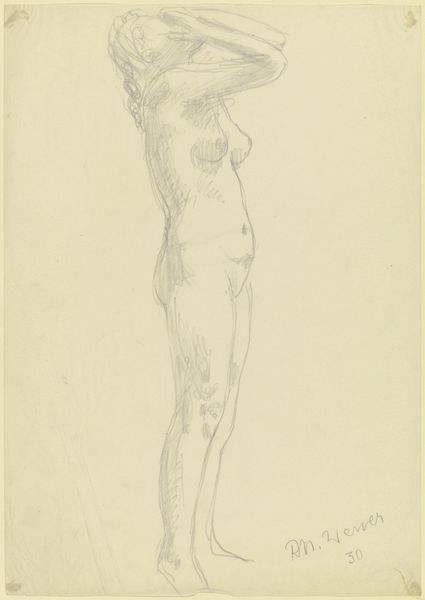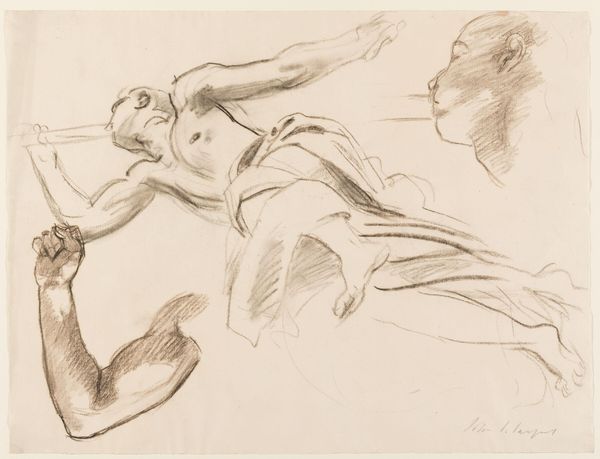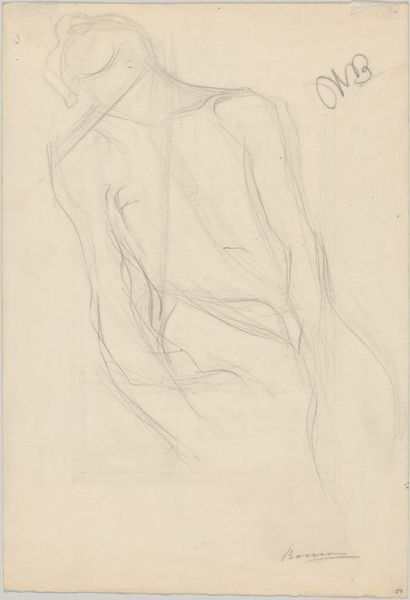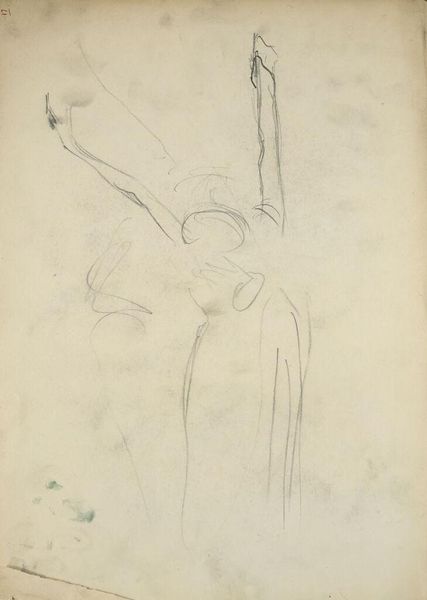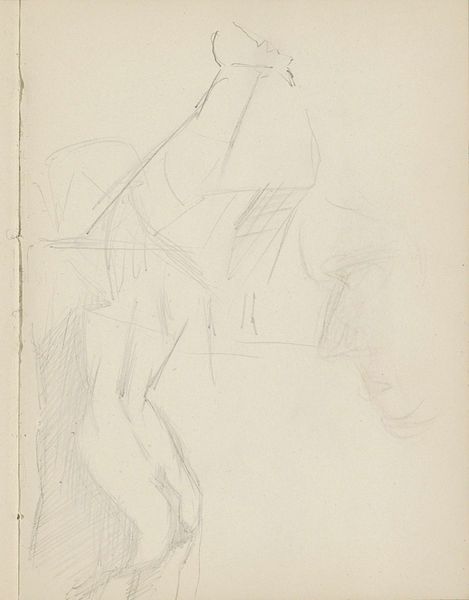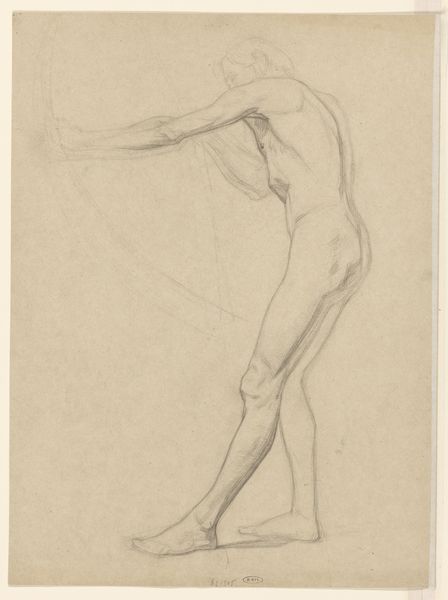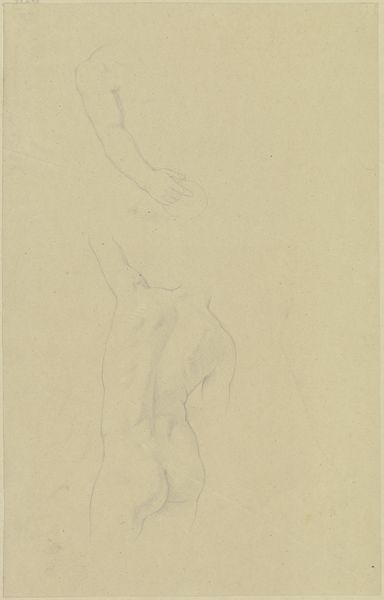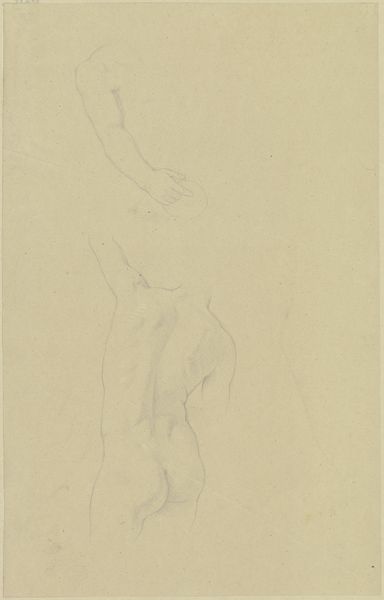
drawing, pencil
#
portrait
#
drawing
#
pencil sketch
#
sketch
#
pencil
#
sketchbook drawing
#
nude
#
arm
Copyright: Rijks Museum: Open Domain
Curator: Here we have a piece titled "Staande naakte vrouwen en armen"—Standing Nude Women and Arms—dated from 1906 to 1945, here in the Rijksmuseum. It is attributed to Reijer Stolk and is rendered in pencil. Editor: It has an incredibly fleeting, intimate quality. It feels like catching glimpses of something private, quickly captured. Curator: Indeed, the pencil lends itself to a sense of immediacy. Given the probable dates, consider the availability, affordability, and accessibility of the material during this tumultuous period in Europe. Paper was relatively inexpensive, and sketching became a popular and versatile medium for many artists. Editor: I'm drawn to how Stolk utilizes the pencil—the varied pressure creating different depths, the subtle shading implying form and volume. Look how he models the body with just a few, confident lines, capturing the weight and balance of the figures. The figure on the right in particular; the application of watercolor washes softens the lines. Curator: The artist seems less interested in idealizing the female form and more intent on capturing the reality of human anatomy. Notice the incomplete sketches of limbs and the way the artist delineates form by concentrating more of the line, using the pencil, as well, to render volume. Editor: Absolutely. And I see an undercurrent of vulnerability. There’s no attempt to beautify; instead, there’s this raw portrayal of the human figure—honest and exposed. Curator: That honesty likely stems from the work's purpose. Preliminary sketches were essential tools for artists, especially academically trained ones, for refining their composition skills, understanding light and shadow, and planning larger compositions. We witness labor and intent coalescing on the page. Editor: Precisely. Examining the varying lines helps in understanding artistic construction; the pentimenti gives insight to artistic intentions through its structure. Curator: A fruitful investigation into form, process, and historical context, offering multiple avenues for our engagement and comprehension of the work. Editor: I agree, seeing these bodies in form and light, captured in pencil, truly exemplifies human presence and a historical moment.
Comments
No comments
Be the first to comment and join the conversation on the ultimate creative platform.
